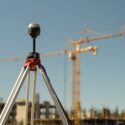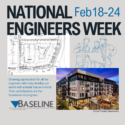By Baseline Water/Wastewater Engineering
In the water/wastewater industry, the popular “energy audit” is what many companies are doing to promote sustainability, a reduction in carbon footprint, and lower operating costs…but are they being done correctly? The answer, more often than not, is no. Many of these companies recommend simply replacing a motor or adding a variable frequency drive (“VFD”) to a pump or blower, which is NOT always the answer.
A proper energy audit dives into the root cause of the inefficiency through tried-and-true engineering. There are three main reasons motors fail, or operate inefficiently:
- Lack of proper maintenance. In this writer’s experience, this accounts for about 10% of the motor failure.
- Improper pump, or blower, design. This is the reason why 85% of pump and blower motors used in the water / wastewater industry fail. Simply replacing the motor in this scenario will only result in having to again replace the motor in the very near future. The other main concern in this case is the fact that every second the motor is energized, it not consuming electricity efficiently. This has a direct hit to the bottom line.
- End of usable life. This accounts for about 5% of why motors fail. Typically, a motor does not reach the published life cycle due to reasons #1 and #2 listed above.
Operating a pump or blower outside of its “sweet” spot, otherwise known as the best efficiency point (“BEP”), will result in inefficient use of the electricity and unnecessary overloads on the motor, which will ultimately shorten the life of the motor.
However, before performing a detailed engineering analysis to determine what upgrades are needed to the system to improve efficiency, a wire-to-water (pumps) or wire-to-air (blowers) efficiency test should be conducted to establish a baseline efficiency. This is Phase I of an energy audit. Results of these tests, when conducted by certified personnel on equipment operated “as is,” will give invaluable information to the utility regarding how efficient their equipment is at utilizing grid electricity to perform a mechanical task, be it moving water or compressing air.
Phase II is the detailed engineering that specifies the upgrades to the system. In Phase II of an energy audit, the deliverable should consist of, at a minimum: a design report, drawings, and specs at a level of detail where a contractor can accurately bid the upgrade project. A thorough engineering analysis may identify an undersized pipe network, or air locked pipe, as being the culprit for the pump inefficiencies, and not the pump itself. Owners appreciate it when an engineering firm tells them that if they put in a $600 air release valve, they can save $5,000 each year in operating costs.
In summary: stop thinking that your system will become any more energy efficient by just replacing motors or adding a VFD. It just so happens that VFDs are inherently inefficient, unless properly matched with a pump that will allow the system to effectively chase an operating point, such as pressure or flow. A properly executed Phase I – Energy Audit and Phase II – Detailed Design will result in the MWh/yr savings, while also requiring less pump maintenance.
For more information, contact marketing@baselinecorp.com or (303) 940-9966.



